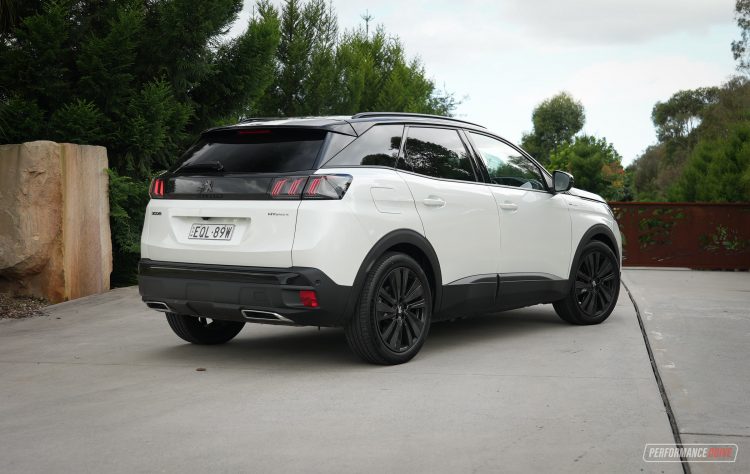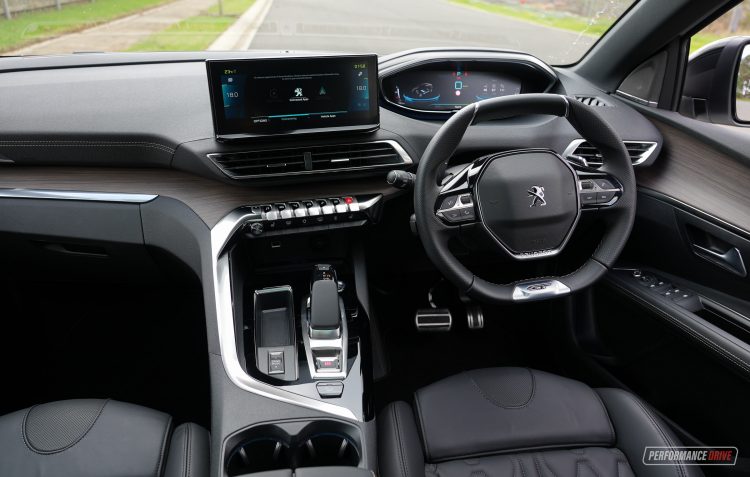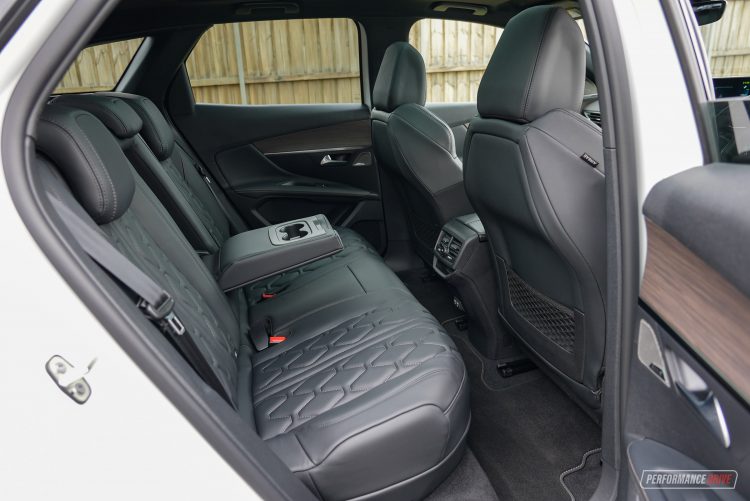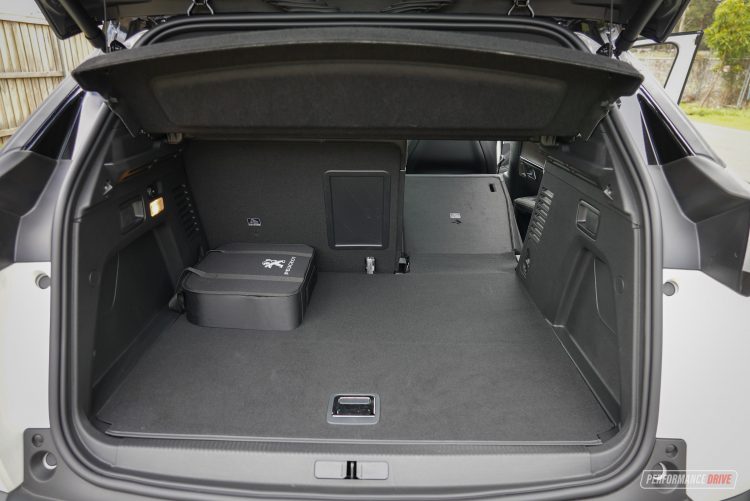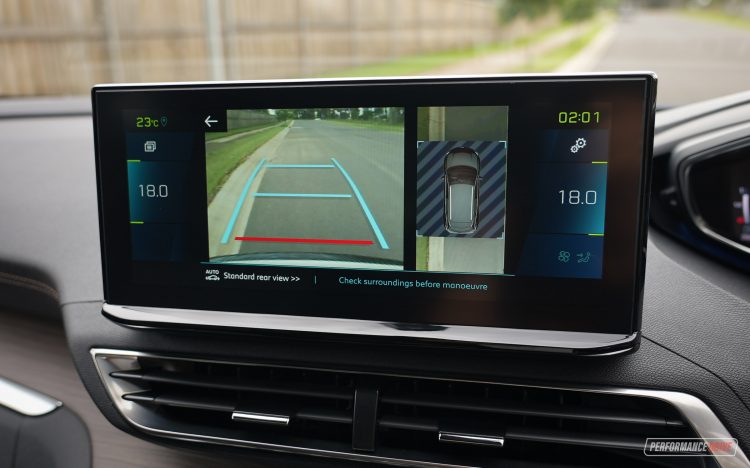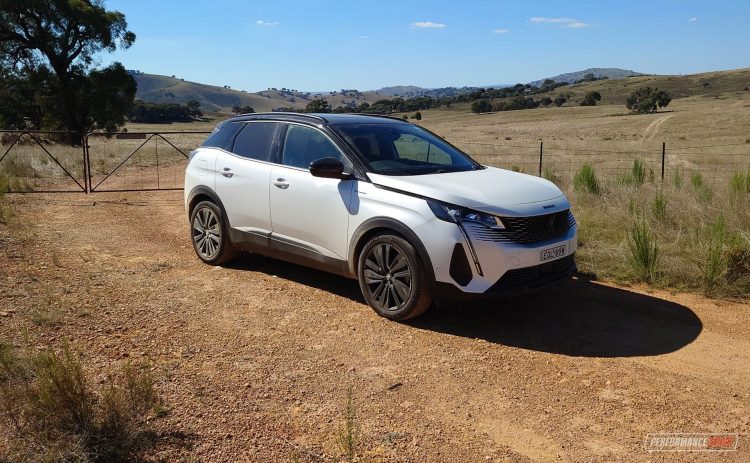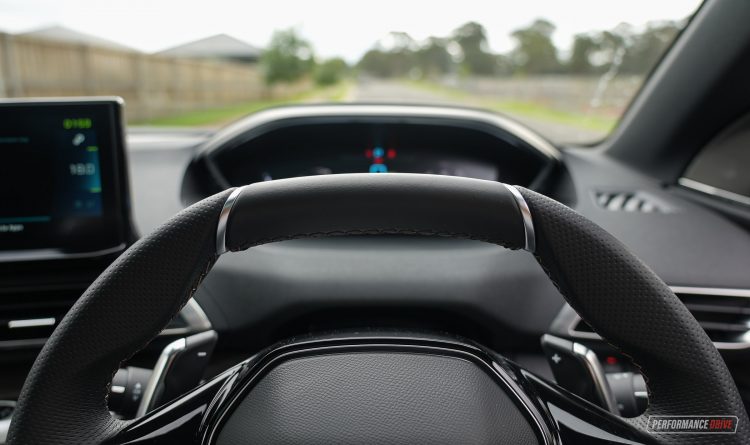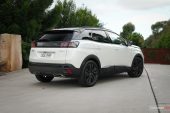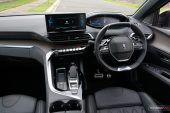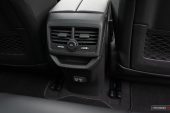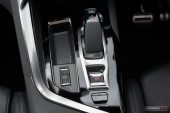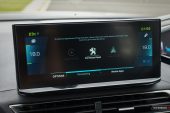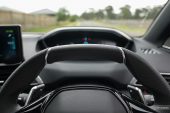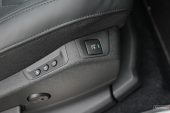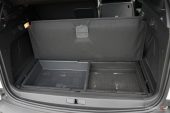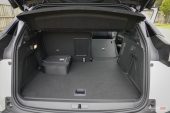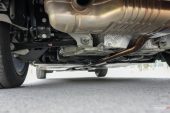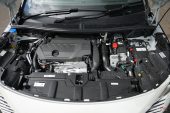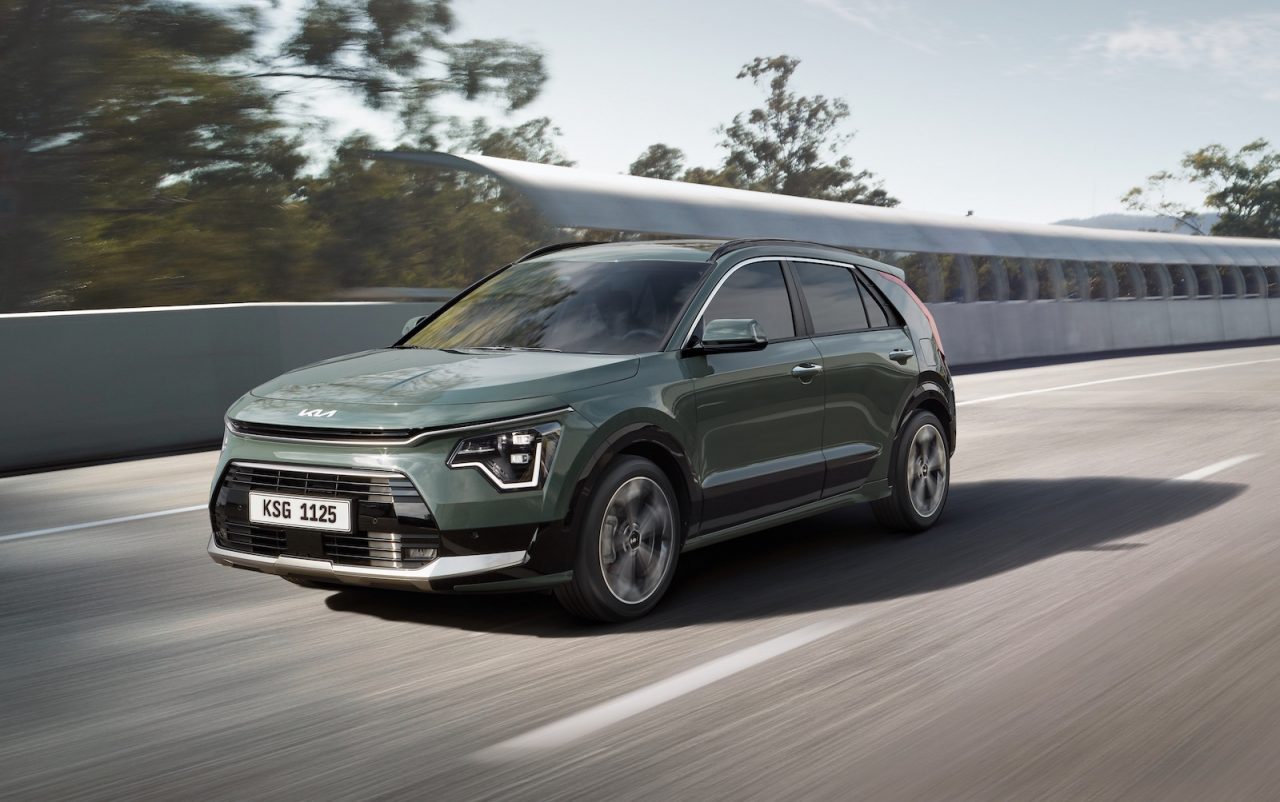We often come across some fringe cars that fall off buyers’ radars for good and bad reasons. Take the Peugeot 3008 for instance. It is an attractive, modern, well-made mid-sized SUV. But it’s not a big volume seller. Now, the French carmaker has just released a plug-in hybrid (PHEV) version. Will this be enough to pull it out of the fringe? Let’s step in and find out.
The second generation 3008 first landed on our shores in 2017. It underwent a mid-life facelift in 2020, offering three specs and two engines; the Allure, GT, and GT Sport, with either a 1.6L turbo-petrol engine or a 2.0L turbo-diesel engine. Now, the PHEV option has followed in the top-spec GT Sport only.
For those who are new to the whole electric vehicle idea, a PHEV is one step greener than your common hybrid that manufacturers like Toyota have been producing for several years now. A PHEV means you can plug it into a charger to recharge the onboard batteries, and drive it solely on electric power, if conditions allow and for a comparatively low distance (over a full EV).
Like with other PHEVs, that is why the 3008 PHEV is not cheap. It retails from $79,990 (excluding on-road costs). However, the 3008 already had a higher starting price than many of its competitors to start with; the most affordable Allure petrol kicks off at $44,990.
2022 Peugeot 3008 GT Sport Hybrid – THE SPECS
[column width=”47%” padding=”6%”]Engine: 1.6-litre turbo four-cylinder
Electric: 13.2kWh battery, 81kW front motor + 83kW rear motor
Output (combined): 222kW / 520Nm
Transmission: Eight-speed auto
Drive type: All-wheel drive
Wheels: F: 19×7.5, 205/55
ANCAP: Five stars
Tare weight: 1815kg
Power-to-weight: 8.17:1 (kg:kW)
Official fuel economy: 1.6L/100km
Economy during test: 6.3L/100km[/column] [column width=”47%” padding=”0″]Fuel capacity/Type: 53L/95 RON
Power efficiency: 138.75kW:L/100km
0-60km/h: 2.93 seconds*
0-100km/h: 5.70 seconds*
60-110km/h: 3.59 seconds*
1/4 mile: 13.95 seconds at 163.4km/h*
Max acceleration: 0.923g
100-0km/h braking: 2.95 seconds at 37.80 metres*
Max deceleration: -1.267g
Decibel at idle: 42*
Peak decibel at 60-100km/h: 81*
Priced from: $79,990[/column][end_columns]
* Figures as tested by PerformanceDrive on the day. Factory claims may be different
2022 Peugeot 3008 GT Sport Hybrid – THE PACKAGE
The French-built 3008 strikes the right notes with its external design. The front end grabs your attention with a frameless grille that magically integrates with the bumper design. It plays tricks with your eyes like an illusion. There are also prominent, thin LED lights that strike through the front end.
Through the sides are wheel arches and lower door bumpers that are flared with plastic cladding to convey strength and ruggedness. The rear also looks modern with a high-waisted window line and LED claw-shaped taillights, encased by a long, thin tinted housing. Dual exhausts integrate flush with the lower bumper. And 19-inch black diamond cut alloy wheels also add to its affluence and attention to detail.
The same theme is mirrored into the interior. It looks and feels very prestige. On your step in, you are guided by puddle lights that project the Peugeot logo onto the ground. Inside, you get beautifully presented lime wood dashboard and door panel finishes, stainless steel door sill scuff plates, ambient lighting everywhere, full grain Nappa leather seating with contrasting grey stitching, and stainless-steel claw cockpit switches. The appearance, quality and feel really exceed expectations for this class.
You are also immersed with technology all around you. There is a 10-inch, high quality touch-screen, and a huge 12.3-inch head-up digital instrument panel. Peugeot’s i-Cockpit design and menus are customisable, and easy to grasp. You also get a brilliant Focal 10-speaker sound system with Android Auto and Apple CarPlay. However, Peugeot Australia has notified us that the Focal system won’t be available in local-spec vehicles for now due to global supply constraints.
A practical element still exists among all the elegance. You get large front door pockets, a slim gear selector that takes up little space, a wireless phone charging pad, a hands-free electric tailgate, roomy front and rear seating with driver’s seat massage function, rear ‘Magic Flat’ seats that fold completely flat and can be released from the boot and backseat, and three 12-volt power outlets.
To make room for the batteries in the PHEV, boot space is slightly reduced compared with the non-PHEV variants. It is still very liveable, just a bit shallower with a higher floor. It falls from 591 litres to 529 litres, and from 1670 litres to 1608 litres with the rear seats folded. We took our test car on a camping weekender for two, and it easily squeezed all the camping gear in when we folded the rear seats down. It is still bigger than the Mazda CX-5’s 442 litres and 1342 litres, and close to the Kia Sportage’s 543 litres and 1829 litres.
Looking at the safety tech list, it is comprehensive. Notable features are blind-spot detection, autonomous emergency braking with low light and pedestrian detection, driver attention alert, lane positioning assist with lane departure warning, road edge detection, 360-degree cameras, distance-controlled cruise control with stop-and-go function, road sign recognition, full LED adaptive and active-bending headlights with auto dipping high beam, and automated steering parallel and perpendicular parking assist to name a few. But it does miss out on reverse collision mitigation.
In terms of warranty, Peugeot offers the industry standard; a five-year, unlimited kilometre warranty with five years of free roadside assistance. Though, the batteries are covered for eight years but only 160,000km. Servicing intervals are required every 12 months or 20,000km. If you wonder how much a French-made car costs to service, it is only slightly above average at $3108 for the first five services.
2022 Peugeot 3008 GT Sport Hybrid – THE DRIVE
Let’s step through the specs first. The 3008 brings together two worlds – a combustion engine and a couple of electric motors that are powered by lithium-ion batteries located under the rear seats. The PureTech 1.6 turbo engine is a strong performer that produces 147kW and 300Nm on its own. One electric motor assists the front wheels and outputs 81kW and 320Nm of torque. Another electric motor powers the rear wheels with 83kW and 166Nm. When combined, the e-motors produce a maximum of 90kW. But then when combined with the petrol engine, maximum power is boosted to an impressive 222kW and a huge 520Nm of torque.
Charging the batteries is achieved either by engine power, braking regeneration, or the onboard 3.7kW charger. The 300-volt batteries hold 13.2kWh, which equates to about 60km of solely electric travel. Charging from flat to full is claimed to take roughly five and a half hours using a 2.3kW mode two cable.
There are some funky driving modes to explore with the 3008 PHEV. ‘B Mode’ is like what other manufacturers call one-pedal drive. This is where acceleration and braking are controlled by the accelerator pedal input (or lack thereof). When no acceleration is applied, energy generation is transferred into the batteries and a natural braking occurs. ‘e-SAVE’ mode empowers the driver to hold or regenerate all or part of the battery charge and choose when to use the electric power at their discretion. Then there is self-explanatory Electric mode, Hybrid mode, Sport mode, and AWD modes.
So, what does all of this mean on the road? It means oomph. And lots of it. 0-100km/h can be achieved in a mere 5.9 seconds according to Peugeot. Our testing exposed a time of 5.70 seconds. Provided there is electric charge, the 3008 flies up to speed effortlessly. The fun thing about it is it’s quite unsuspecting out of a mid-sized SUV. And when you have run out of electric juice, the 1.6-litre engine feels unrestricted, strong, smooth, and happy to perform.
A new eight-speed ‘e-EAT8’ auto transmission integrates power to all four wheels via a wet multi-plate clutch instead of the typical torque converter. It goes a long way towards springing the 3008 up to speed swiftly and smoothly. There is minimal delay or jerkiness between gear shifts.
Fuel consumption is rated at an average of 1.6L/100km. But we advise against judging the 3008 solely on this figure – it is deceiving. It’s a figure produced from a test over a specific time and length travelled only. Once you have used all your battery charge and it is only using charge created from braking, fuel consumption will quickly start to increase.
In other words, if you start your journey with full batteries, a full fuel tank, and drive until they are close to empty, your average will be about 6.3L/100km (which is still commendable). However, if you’re lucky enough to be able to charge before your 60km all-electric distance is up, you could potentially give yourself an average of zero.
Sadly, electric charging stations are either not readily available or reliable enough in Australia (or lined with other EVs waiting to use it as well). We only recommend EVs and PHEVs if you have access to your own charging system and do not need to rely on the EV public network.
Off the beaten track, the 3008 makes an agile adventurer as well. We took it onto some gravel and dried creek beds and it performed brilliantly. The suspension has lots of travel in it, so it absorbs and bounces through bumps with no fuss. A 217mm ground clearance also helps with deeper holes. On the tarmac, it also handles corners sturdily. Being a little heavier with the batteries (1815kg), it seems to help it feel planted around bends. No complaints here.
2022 Peugeot 3008 GT Sport Hybrid – THE VIDEO
2022 Peugeot 3008 GT Sport Hybrid – THE VERDICT
The Peugeot 3008 GT Sport Hybrid has turned itself into a jack of all trades. It’s amazing how it can be a highly fashionable, fast, frugal, and practical SUV all in one go. And unsuspectingly, too. Kudos to the design and presentation, as well being as a perfect halfway house in the industry’s transition from fossil fuels to electric energy. If your circumstances are right, it can even be used as a full EV.
But we just cannot get over its price tag. $80k is a lot of money for any mid-sizer. And we think maybe too much for the 3008 to be pulled out of the non-premium category.
[column width=”47%” padding=”6%”]PROS:
– Most powerful and quickest SUV in its class (as far as we’ve tested)
– Gorgeously presented interior with high-quality lime wood, Nappa leather
– Decent electric range for a PHEV, up to 60km
– Greater distance service intervals at 20,000km
[/column] [column width=”47%” padding=”0″]CONS:
– Loss of a spare wheel in the PHEV
– Awkwardly small and positioned steering wheel
– Price is too high for what it is[/column][end_columns]
As always, if you’re thinking about buying a new car don’t forget to click here to speak with our car buying specialists.

